Staying with the buzzword of our times, the word "corona" is being used very often in astronomy too. So we are just going to skip the beer, cake, and cigar brands, as well as the locations, arts, satellites and many other domains where the word appears. Even then, containing ourselves as such, the topics where the term pops up are still very varied. A brief overview.
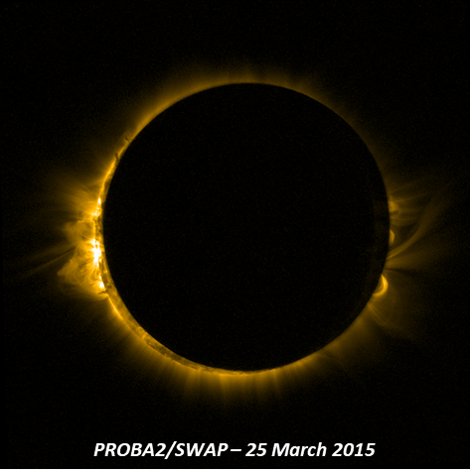
Starting in the solar-terrestrial domain, corona refers of course to the outer atmosphere of the Sun and the other stars. For solar physicists and space weather experts it is an important research topic, and to the general public it is best known as the white glow surrounding the Sun during a total solar eclipse. There are quite a few derivatives too, such as coronal mass ejection, coronal hole, coronagraph,...
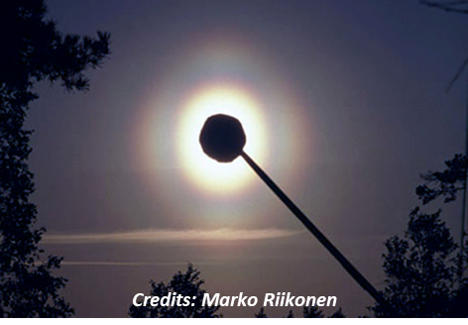
There exists a second type of solar corona, but that has nothing to do with solar physics. In fact, it's a meteorological phenomenon that is produced by the diffraction of light by tiny cloud droplets, small ice crystals or pollen in the earth's atmosphere. One or more coloured rings can then be seen around a very bright center. The rings are more like ovals in case of a pollen corona, as the pollen are not so nicely spherical as water droplets. The corona is much smaller than the typical halo that can be seen around the Sun (another meteorological phenomenon). Please make sure never to gaze directly at the Sun, but try to observe it in a reflection e.g. in a pool of water or a mirror of plain glass. Of course, in this respect, also the Moon can have a corona!
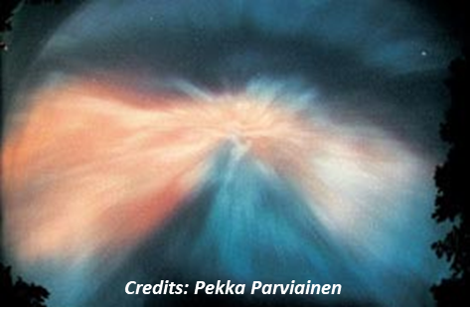
Polar lights have their corona too. In this context, it pertains to the shape that the aurora assumes when it passes overhead an observer's location on the ground. Then, the observer looks directly up along a bundle of parallel magnetic field lines. As a result of this perspective, the auroral features seem to fan out from a central point in the sky, giving it a towering, crown-like outlook. Therefore, it is sometimes called a polar light crown.
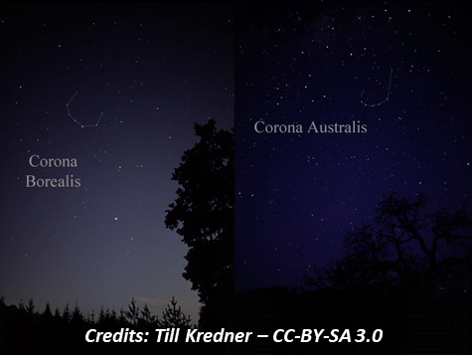
Corona is also the name given to two small star constellations. In the northern hemisphere, there's Corona Borealis (Northern Crown), located between Hercules and Bootis. Its main star has a luminosity 75 times that of the Sun. In the southern hemisphere, Corona Australis (Southern Crown) borders the constellations of Sagittarius and Scorpius. Both constellations have a distinctive crown-like shape. They contain a number of multiple-star systems as well as some giant stars. Note the main stars of the constellations as we see them in the sky do not have any physical connection, they just happen to stand in our line-of-sight.
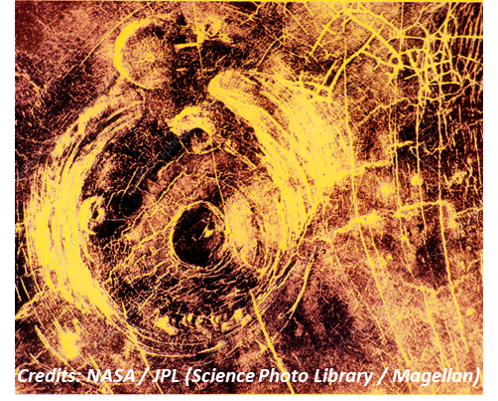
Planetary geologists joined the corona club in the 1980s when the Russian Venera-15 and -16 spacecraft produced radar images of the Venus surface, revealing oval-shaped features of several hundred kilometers in diameter showing concentrical fractures. Called corona, it is believed that they are formed when plumes of rising hot material in the mantle push the crust upwards into a dome shape, which then collapses in the centre as the molten magma cools and leaks out at the sides, leaving a crown-like structure. The Magellan spacecraft imaged these features extensively in the 1990s, and coronae were also discovered on Miranda, a moon of the planet Uranus.
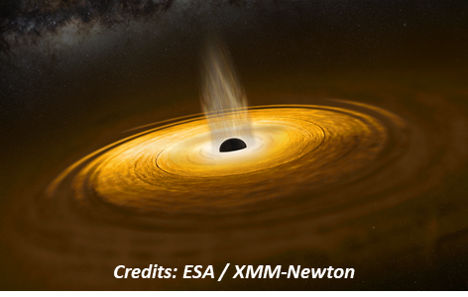
In the end, corona propelled itself all the way into stardom. Indeed, there seems to exist something what is called a galactic corona. Galactic coronas are huge, invisible regions of hot gas that surround a galaxy's visible bulk, forming a spheroidal shape. Coronas are so hot that they can be detected by their x-ray emission, far beyond the optical radius of the galaxy. Because they are so wispy, these coronas are extremely difficult to detect. Galactic coronas have been and are currently being studied extensively, in the hope of gaining a further understanding of galaxy formation. By the way, also black holes have a feature that is called a corona. This corona is a region hovering over the black hole, changing in size and brightness, and (maybe) forming the base of the black hole jets. The corona concerns a region of very hot electrons – with temperatures of around a billion degrees (no, it's not a typo) – producing high-energy x-rays that stream out into space.
If you know of any other use of "corona" in the astronomical or space weather related domain, please let us know and we'll be very happy to add it here in the online newsitem!
References
- Sky and Telescope - Bob King (2017): https://skyandtelescope.org/observing/sneezing-at-the-full-moon/
- Les Cowley - Atmospheric Optics: http://www.atoptics.co.uk/droplets/corona.htm
- Sky and Telescope - R.H. Eather (2006): https://skyandtelescope.org/observing/celestial-objects-to-watch/an-aurora-watchers-guide/
- Neil Bone - Aurora (2007): https://books.google.be/books/about/Aurora.html?id=9DdHs1ZirigC&redir_esc=y
- NASA/JPL - Venus / Aine Corona (1996): https://www.jpl.nasa.gov/spaceimages/details.php?id=PIA00202
- NASA - Karl Hille (2017): https://www.nasa.gov/image-feature/goddard/2017/hubbles-cool-galaxy-with-a-hot-corona
- Wang et al. - ApJL (2001): https://iopscience.iop.org/article/10.1086/323179/fulltext/
- ESA - Black hole corona (2020): https://www.esa.int/ESA_Multimedia/Images/2020/01/The_dynamic_behaviour_of_a_black_hole_corona
- NASA - Black hole corona (2014): https://www.nasa.gov/press/2014/august/nasas-nustar-sees-rare-blurring-of-black-hole-light





